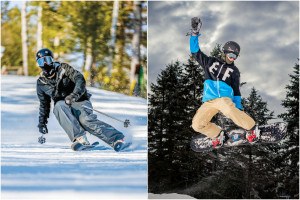Gua Sha: An Ancient Cure for Modern Sports Injuries
Warner Bailey, a star lacrosse player at Haverford School, wasn’t thinking about the weekend on a recent Friday afternoon like most high school students. Instead, he was focused on getting through a Gua Sha session. Gua Sha is an ancient manual therapy method in Chinese medicine that’s used to treat everything from tendonitis and golfer’s and tennis elbow to shin splints and back and heel pain.
In Gua Sha, the skin around the affected area is lubricated and then pressured and scraped with a rounded tool. The method produces “sha” which are small blood bruises. It has been commonly referred to as “tooling” or “scraping,” and the purpose is to break down recently formed scar tissue, improve flexibility, and facilitate the healing process. It has been described as re-injuring an area in order to stimulate healing. (Our method was originated by David Graston, and the form used by me and my team is known as Sound Assisted Soft Tissue Mobilization (SASTM)).
Gua Sha tools are easy for the clinician to hold and allow the clinician to work around bony landmarks where tendons attach. They are non-porous, which makes them a safe and hygienic way to treat. The edges are smooth and when used with a lubricant are designed for a comfortable and efficient treatment.
Although clients are at first concerned about the appearance of their skin and the redness, they are delighted with the increased flexibility, reduced pain, and improved function immediately after the treatment. The “”bruising” effect/appearance only lasts a few days and then completely disappears. It usually only appears after the first session or after a long break in treatments (3-4 months). The frequency of treatments is usually once or twice per year, at most every 2-3 months. There is no “down-time” following treatment. In most cases, immediate return to sports activity is encouraged.””If you have any of the following it can be a great addition to your treatment: bicep tendonitis, rotator cuff tendonitis, golfer’s elbow, tennis elbow, DeQuervain’s, Achilles tendonitis, hamstring strain/tendonitis, iliotibial band tendonitis (IT band), patellar/knee tendonitis, posterior tibialis tendonitis, plantar fasciitis, shin splints, and back pain.
It’s important that your physical therapist sets you up with a program that combines strength training and flexibility work in conjunction with Gua Sha and other forms of manual therapy work. This will allow you to return to your sport much quicker than conventional physical therapy and rehabilitation treatment alone.
Price is $85. Length of Gua Sha session is 20 minutes.
Joe Zarett is a physical therapist and president and founder of Zarett Rehab and Fitness.
Have you ever tried Gua Sha? What did you think about the experience and what was the outcome?




